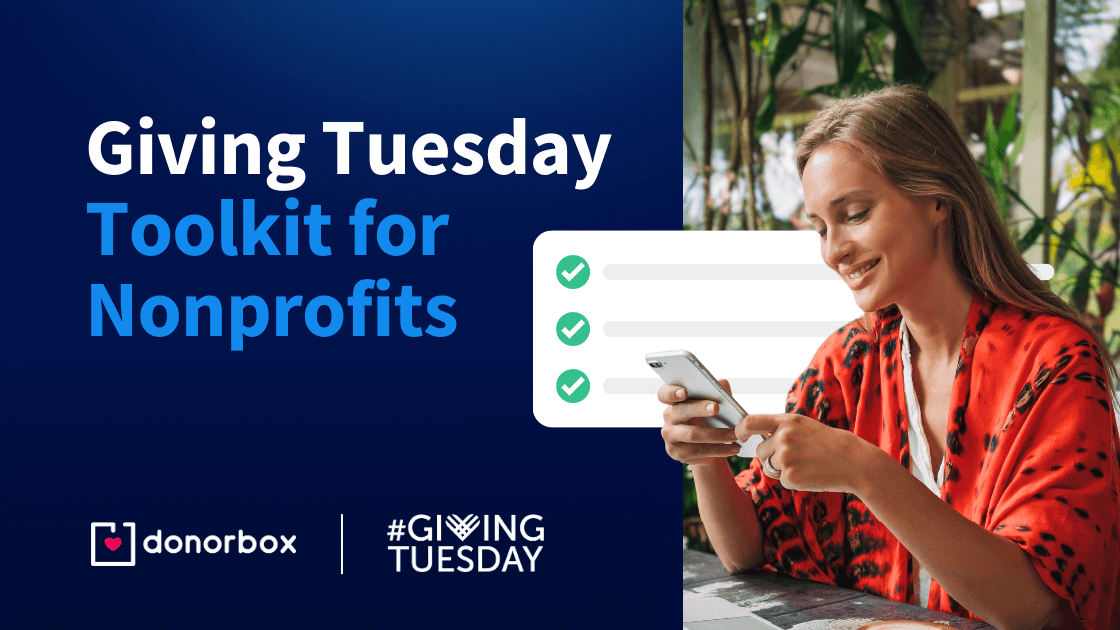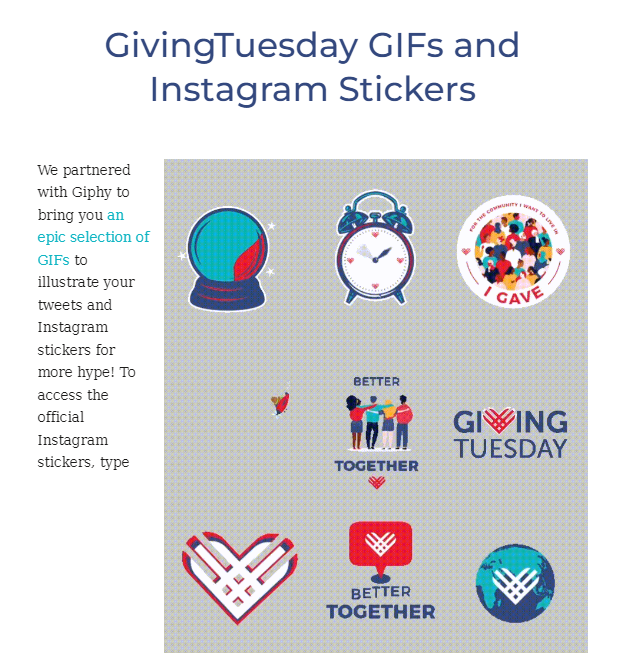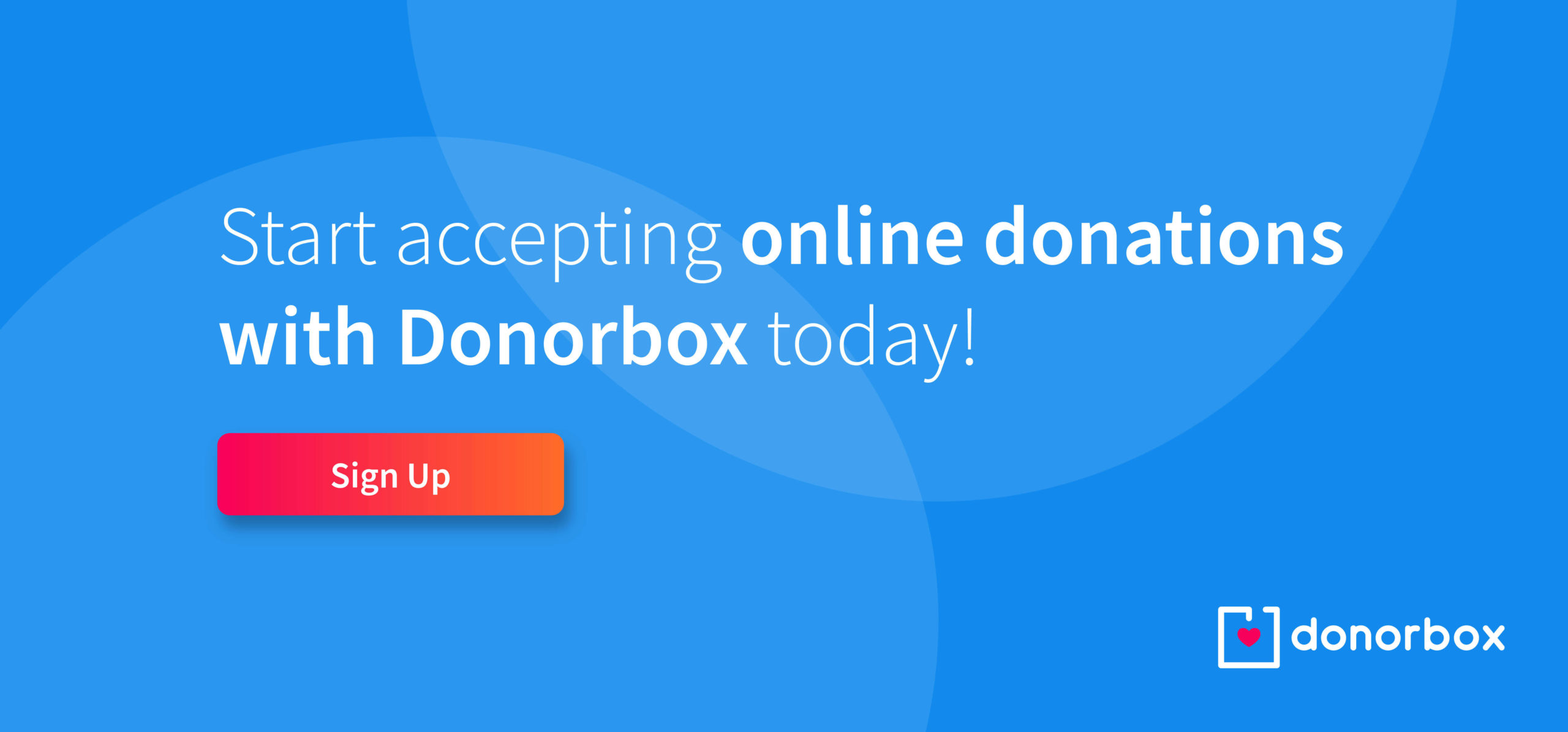Giving Tuesday Toolkit: Tools and Tips for Nonprofit Success
Get ready for Giving Tuesday 2025 with the ultimate toolkit – packed with logo and graphic tips, event ideas, and a full campaign workbook. Everything you need, all in one place!

Get ready for Giving Tuesday 2025 with the ultimate toolkit – packed with logo and graphic tips, event ideas, and a full campaign workbook. Everything you need, all in one place!

Giving Tuesday 2025 is a few months away, and nonprofits around the world are already gearing up for one of the biggest giving events of the year!
In 2024, a whopping $3.6 billion in donations was raised on Giving Tuesday in the U.S. alone. This record-breaking amount was a 16% increase from the amount raised in 2023.
The sooner you start planning your Giving Tuesday strategy, the higher your chances of success. In this article, we’ll share a handy toolkit and expert tips to help you prepare for this global generosity movement. Let’s get started!
Launched in 2012 in the United States, Giving Tuesday is a day of giving back to nonprofits within the community, either monetarily or by taking action in support of their mission. It was inspired by the various days of shopping following Thanksgiving, including Black Friday, Small Business Saturday, and Cyber Monday.
Giving Tuesday was created by the Belfer Center at the 92nd Street Y with the help of the United Nations Foundation. Their goal was to push back against the consumerism of the holiday season and remind people to support their favorite nonprofits for that end-of-the-year push.
In the U.S. in 2025, the post-Thanksgiving holiday season shopping days will take place on these dates:
Giving Tuesday has grown from a simple concept to a global celebratory day of the year, with millions taking part. It’s the perfect time for you to gear up and launch a fundraising campaign to reach potential donors.
End-of-year giving is a vital time to raise up to a quarter of your annual revenue, and Giving Tuesday serves as the kick-off for the season. It’s the perfect opportunity to set the tone for year-end giving while bringing in a significant amount of donations to support your mission.
Because Giving Tuesday has become a worldwide phenomenon, much of the work related to promoting the day and sharing its meaning has already been done. However, you still need a solid strategy to direct donors to your site and donation page amid a sea of Giving Tuesday solicitations.
The right strategy will help your nonprofit stand out from the crowd this Giving Tuesday and raise more for your important work.
The Giving Tuesday key messages are the standard communication that should be used by all nonprofit organizations. A few years back, Giving Tuesday released its key messages so the whole community could understand the meaning of the day and share it effectively.
A great way to share these key messages is to put them directly on your donation page and craft the perfect Giving Tuesday 2025 campaign.
Make sure your donation page aligns with your brand, and include various giving intervals – including recurring donation intervals – to appeal to different donors’ giving preferences.
Check out how The School of Imagination & Happy Talkers created a compelling donation page and raised over $40,000 for their Giving Tuesday campaign in 2024!

Create a Giving Tuesday Campaign on Donorbox!
Giving Tuesday and Small Business Saturday are both movements that have expertly utilized social media to grow – and you can use it for your campaign, too!
Social media is one of your primary playgrounds for Giving Tuesday – it is a cost-effective and high-impact way to reach your audience and boost donations.
Brand your online channels with Giving Tuesday and talk about your participation. Remember, don’t change the name of your nonprofit account anywhere on social media – this can make it hard for your supporters to find your profile.
Next, start creating your social media content. Make Giving Tuesday content that talks about your mission, impact, and the current work and situation of your nonprofit. Your content needs to educate your audience about your cause and build an emotional connection to your mission.
Pro tip: Remember to use #GivingTuesday to amplify your reach on the day. Giving Tuesday also promotes tagged posts on their channels!
A communications plan will help you execute your campaign successfully. Once you’ve announced your participation, expand promotions and accelerate communications in November. As the countdown begins, prepare social media communications for the day of Giving Tuesday.
Use platforms like Canva to create social media graphics.
Download all the sample Giving Tuesday images and logos here and create collaborative graphic work co-branded with Giving Tuesday. You’ll also find Instagram stickers and GIFs on this page for promoting your campaign on social media.
A note on why GivingTuesday no longer encourages graphic flyers: The algorithm “throttles” content it views as being inauthentic. This means multiple accounts using similar graphics can impact the collective reach of the campaign. Ideally, you should be creating your own original content. GivingTuesday Canva templates still exist, but you should create custom photo/video content that appeals to your supporter base.
The Giving Tuesday website also recommends Pexels stock images, which you can use for your graphics.
Pro tip: Encourage donors to share your donation page on their social media channels! This helps expand your reach and attract even more donations to your cause.
Now, let’s explore how to leverage various social media platforms for your Giving Tuesday campaign and outreach.
Facebook is one of the most fluid platforms to use for spreading Giving Tuesday awareness and raising funds.
Dos:
Don’ts:
There’s a dedicated Facebook group run by the Giving Tuesday team for nonprofits like yours to collaborate and ask questions.
Short and sweet is the name of the game on this platform. X is great for linking up with potential donors by engaging in conversation and searching through hashtags.
Dos:
Don’ts:
Pro tip: Organize X chats or AMAs with your nonprofit’s key members to talk about your cause, work, and impact.
Use eye-catching graphics for Instagram. For captions, you have two options: short and to the point (think one to three sentences), or long and personal.
People are less likely to read a long paragraph if they can’t relate to it, so reel them in with a cool graphic and poignant caption to follow.

Dos:
Don’ts:
The most professional of the social media platforms is LinkedIn, specifically built for networking and finding work opportunities. Your posts should be interesting, conversational, and goal-focused. Showcase what’s special about your nonprofit, and you’ll draw in donors in the process.
Dos:
Don’ts:
An email campaign is your next main playground on Giving Tuesday. While it might seem outdated, people still religiously check their emails.
Crafting a campaign doesn’t have to be difficult! There are plenty of ways to approach creation. Send out your first email a month before Giving Tuesday. It’s close enough to be relevant, but far enough away to not seem pushy.
Pro tip: Create a Giving Tuesday email schedule and keep the interest alive.
The last thing you want is for someone to delete your email without opening it just because the subject line isn’t interesting enough.
The best way to start is with some form of exciting information. Rather than “Donate to Us on Giving Tuesday,” appeal to their emotions and say something like, “Feed a Hungry Child Today.”
Pro tip: If you have merchandise being discounted for Giving Tuesday, this is a great way to tap into the Black Friday spirit. Include it as one of the first keywords in your subject line. “Giving Tuesday is Here” is vague and doesn’t sound as though a deal is being made by supporting them. Try “Giving Tuesday: All Products 25% Off” instead.
Hook the reader immediately. Paint a picture for them – who are they helping by supporting your cause? Why were they having problems before? How are you helping this group now? Sharing personal, relatable information is the best way to tug at the heartstrings of your supporters.
Putting a face to a group does wonders! If there’s a specific story that you think would appeal to your donors’ emotions, use that to convince them to proceed and see how they can help.
For example, “Allan was sick, but he did not have a child specialist at the hospital. [Insert image]. That’s why we do XYZ.”
No one has enough time in the day to learn the entire story of a nonprofit. So, in three to five sentences, explain what you do, why you do it, how you started doing it, and what you’ve accomplished so far.
For example, “Our company was founded in XYZ year. Since then, we’ve done XYZ. We’re now looking to accomplish XYZ.”
Get straight to the point: What do you need and why? If you crafted your email with the past three tips, you shouldn’t need anything more than the point.
If you’re an animal rescue, you might say, “We’re looking to raise $25,000 to provide life-saving surgeries for dogs.”
Giving Tuesday has finally arrived! If you emailed supporters previously, it’s time for a follow-up on the day of.
Promote it as much as possible in the subject line. You won’t come off as too pushy – just make sure the rest of your email has a gentler tone.
Donor fatigue can work against all your Giving Tuesday campaign efforts, so be careful and sensitive to avoid reaching a point that is counterproductive in driving donations.
Make sure your content is fresh, appealing, and unique. Provide substance to your audience, and you’ll be less likely to cause your audience to unsubscribe from your updates due to fatigue.
Press releases are straightforward and similar to email campaigns. Here are some points to include in your press release:
You can send press releases to local media, potential partners, and other charities you’re hoping to align with.
Dos:
Don’ts:
Explore some alternative creative ideas to rally your supporters toward your nonprofit.
For example, you can send a calendar invite to your supporters and subscribers for the day of Giving Tuesday. They will receive a reminder on the day from their personal calendars. Explain the exact steps to donate to your organization on Giving Tuesday.
As you execute your campaign, send a series of emails to build anticipation. Share something creative and new in your emails, adding additional value and attention to your cause. And count down to the day of Giving Tuesday!
Giving Tuesday helps nonprofits and individuals with unique ideas to support the world and their communities.
Giving Tuesday is a great opportunity to ask your top supporters to fundraise on your behalf.
To achieve a smooth peer-to-peer campaign, use Donorbox Peer-to-Peer. Invite your top supporters by email or allow anyone to volunteer through your campaign page. Once signed up, your supporters receive an email with detailed instructions about how to set up their own fundraising pages.
They can then personalize their pages to tell a compelling story about their relationship with your nonprofit. Then they simply share their donation page with their network for Giving Tuesday. Any donations they receive automatically flow into your Donorbox account!
Check out how Gads Hill Center used Donorbox Peer-to-Peer for their Giving Tuesday campaign. They shared their top fundraisers and allowed anyone to sign up to fundraise on their behalf!

Launch A Peer-to-Peer Campaign
Provide your fundraisers with a fundraising toolkit and this step-by-step guide to Donorbox Peer-to-Peer so their fundraising process is as easy as possible!
Bonus resource: Here are 50 more ideas if an individual wishes to help their community and local nonprofits on this Giving Tuesday. Use these ideas to encourage involvement and inspire people to give in the most meaningful ways.
It’s the day of Giving Tuesday! Now is the time to go full throttle. Post on social media throughout the day, sharing your donation page regularly. Send out your prepared, engaging emails and keep the momentum going with innovative, branded content!
Pro tip: Add a goal meter on your donation form to create a sense of urgency. When donors can see how far you are from achieving your goal, they’ll be inspired to give more.
You did it! You’ve brought in donations, found potential donors, and connected with your base.
Send out an acknowledgment email once the day is over. Thank your email list, share your total amount raised, and include any uplifting stories that took place on the day. Don’t forget to outline your plans for these donations and reiterate your donors’ impact.
Don’t forget to express your gratitude on social media. Create a thread on X to give yourself room to write as much as you’d like, share a catchy post Instagram, write a longer post for Facebook noting your accomplishments, and include a link to the finished fundraiser to post on LinkedIn.
Giving Tuesday has provided tons of resources for organizations like yours preparing for Giving Tuesday 2025. Here are some of the best resources to check out:

Here are some resources for specific types of organizations:
Listen to this 15-minute podcast on how to make your Giving Tuesday planning as easy as possible. Cara Augspurger and Lindsey Baker Bower share five critical steps for a successful fundraising strategy to meet your goal on the day – and keep donations rolling in throughout the end of the year.
▶️ Subscribe to our YouTube channel to master fundraising with pro tips and actionable advice from nonprofit and fundraising experts.
Giving Tuesday is crucial for nonprofits like yours, so utilize every platform possible to bring in donations, raise awareness of your mission, and connect with others. Make it your most successful holiday yet!
Donorbox has you covered with tons of tools to make the most of Giving Tuesday 2025. Explore our intuitive fundraising features here.
Check out the rest of Nonprofit Blog for more insightful articles on Giving Tuesday, fundraising, nonprofit management, and more.

Subscribe to our e-newsletter to receive the latest blogs, news, and more in your inbox.